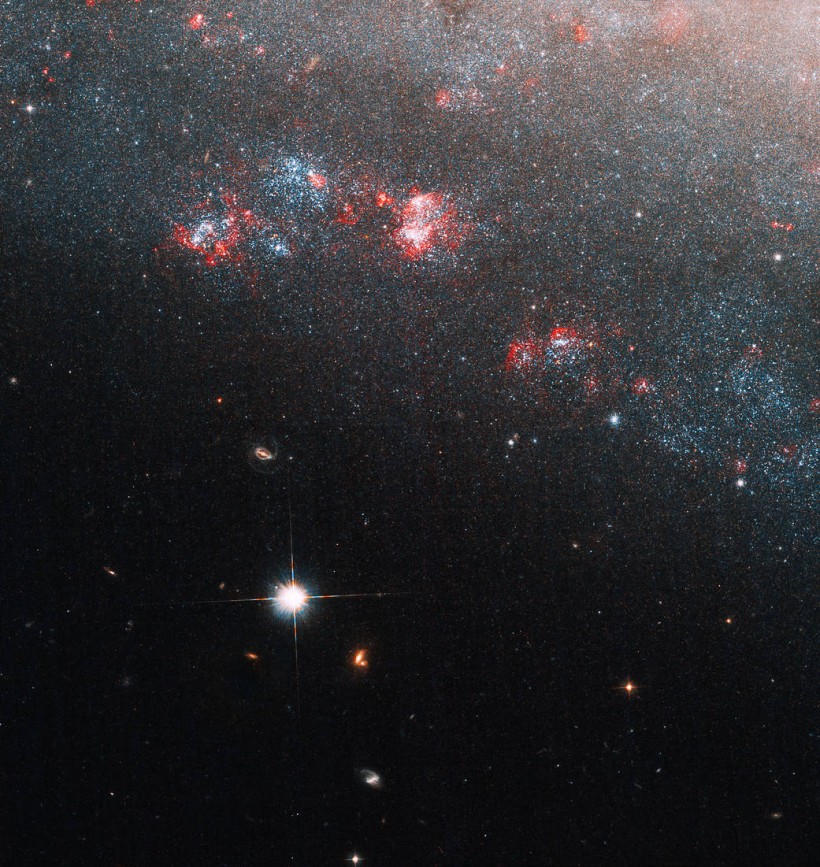
The NASA Hubble Space Telescope image highlights a portion of the spiral galaxy called the Needle’s Eye – an accurately diminutive name for a dwarf spiral galaxy.
China's astronomers have overthrown one of astronomy's most fundamental assumptions about star formation.
That underlying principle has been used for decades to calculate galaxies' histories and the possibilities of discovering dark matter and life beyond our solar system.
Initial Discovery
According to South China Morning Post (SCMP), Beijing and Nanjing researchers examined 100,000 nearby stars from China's Large Sky Area Multi-Object Fibre Spectroscopic Telescope (LAMOST) and the European Space Agency's Gaia space observatory.
They discovered that low-mass stars (30 to 70% of the sun's mass) were rare billions of years ago.
The team's findings were published Wednesday, Jan. 18, in Nature. The discovery shows that the Initial Mass Function (IMF) is not universal but changes with time.
IMF is a basic power law where a relative change in one variable leads to a commensurate relative change in another. It is a key idea in contemporary astronomy. It tells how many stars of each size are generated as a gas cloud collapses under gravity.
Related Story: A Massive Astronomical Survey Uncovers 3.3 Billion Milky Way Objects
IMF Concept
Astronomers use the IMF to study star formation, galaxies, supernovas, and black holes.
The paper's principal author, Liu Chao from Beijing's National Astronomical Observatories, claimed a universal IMF, based on Milky Way findings, is "counterintuitive."
He added the number of stars formed might vary with the temperature of the collapsing gas cloud, and the IMF of our own galaxy may not reflect the IMF of other galaxies.
Scientists are using better telescopes to monitor smaller, fainter stars to challenge the IMF's notion. That notion indicates that a new stellar population always has a set proportion of relatively few massive stars, a modest number of sun-sized stars, and many smaller stars.
One of these sophisticated devices is the LAMOST, a 4-meter (13.1-foot) reflecting telescope in Beijing. It can record hundreds of star spectra.
Novel Device and Method
LAMOST accurately measures Milky Way stars' temperature, velocity, and chemical composition. It also detects metallicity, the number of elements heavier than helium in a star.
LAMOST, the most efficient ground-based telescope, has captured millions of star spectra in a decade.
This data, together with Europe's Gaia satellite telescope's star position and distance information, made the study possible, said Liu.
Meanwhile, galaxies' evolution must be recalculated using the IMF's confirmed variation.
In 2015, Liu and his Chinese Academy of Sciences and Nanjing University colleagues selected 93,000 neighboring stars and grouped them by metallicity. The scientists then determined mass distribution by group.
Young populations' star proportions changed with metallicity. The report suggested parent gas clouds form more low-mass stars with more heavy elements.
Liu said the team spent a lot of work eliminating star selection and calculation biases to make their conclusions robust.
He added additional scans must verify the discoveries before they can be used to reconstruct a more precise history of the Milky Way.
The Hubble-class Chinese Space Station Telescope (CSST), which will launch next year, excites Liu.
Liu said CSST would provide astronomers with a bigger sample of stars in and beyond the Milky Way, particularly huge stars that are uncommon and hard to identify with current equipment.
See Also: NASA Scientists Spot Flashes from the Sun that May Help Them Predict the Next Solar Flare










